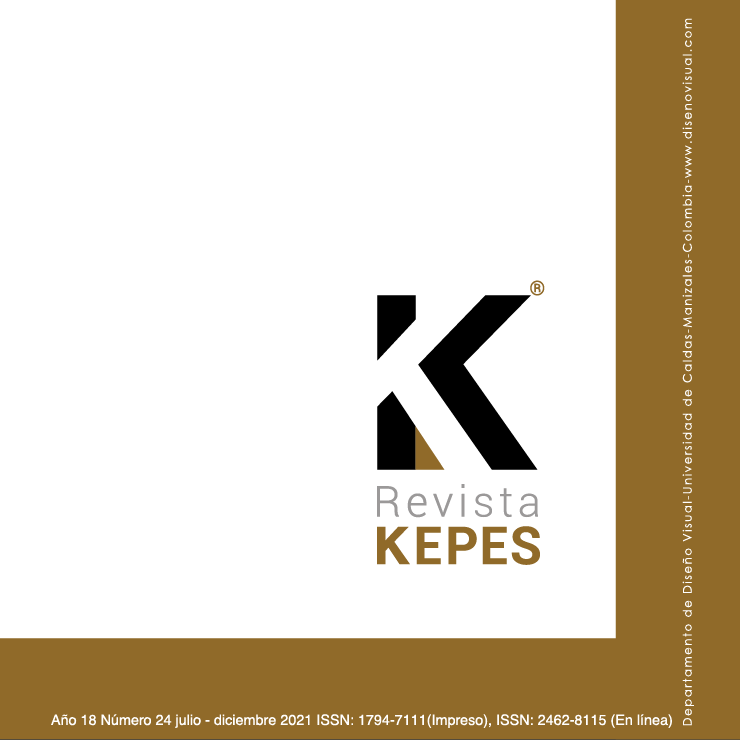Authors
Abstract
This article inquires into the image of the transformation of river fronts through urban design and the development of new articulating public spaces between the fabric and the water. Based on the developments carried out by György Kepes and Kevin Lynch, the paper focuses especially on the concepts of imaginability and legibility. The work is carried out through a qualitative method and the methodology is based on the phenomenological approach developing a territorial hermeneutic through case studies for which, four relevant waterfronts transformations of the last sixty years are analyzed: Baltimore Inner Harbor (USA); London Docklands (England); Ría 2000 of Bilbao (Spain) and Battery Park, New York (USA), later deepening into the case of the central riverside reconversion of Rosario (Argentina). This case study is representative because the claim to change the relationship between the city and its river has been present since the first decades of the twentieth century, requesting the transfer of rail-port infrastructures (still active and of great economic relevance) to other sectors, in order to restructure the central coast into new public spaces. However, it is from the definitive democratic return in Argentina in the mid-1980s, that various continuous actions have been carried out over time to restructure the image of a metropolis that grew with its back to the river, to become a city facing the Paraná thus strengthening its identity, structure and meaning. Urban design plays a key role in changing urban imaginability. However, in order that these reconversions do not generate standardized global images, it is necessary to listen carefully to the demands of the population, their symbolic values and their heritage, giving place to local specificities and their particular identity.
Keywords:
References
Breen, A. y Rigby, D. (1994). Waterfronts. Cities reclaim their edge. Kim Hupp Lee. Castrillo, M., Matesanza, A., Sánchez, D. y Sevilla, A. (2014). ¿Regeneración urbana? Deconstrucción y reconstrucción de un concepto incuestionado. Papeles de relaciones ecosociales y cambio global, 126, 129-139.
Clarín. (2015, 9 de febrero). Rosario, de cara al río Paraná. Clarín, Sección viajes.
Cullen, G. (1961). (2012). The concise Townscape. Routledge.
Delgado, M. (2008). La artistización de las políticas urbanas. El lugar de la cultura en las dinámicas de reapropiación capitalista de la ciudad. Scripta Nova, Revista Electrónica de Geografía y Ciencias Sociales, vol. XII, 270(69). http://www.ub.es/geocrit/sn/sn270/sn27069.htm
Della Paolera, C. M., Farengo, A. y Guido, A. (1935). Plan Regulador y de Extensión. Municipalidad de Rosario.
Desfor, G., Laidley, J., Stevens, Q. y Schubert, D. (2011). Transforming Urban Waterfronts. Fixity and Flow. Routledge.
Galimberti, C. (2014). Reflexiones en torno a las transformaciones de waterfronts contemporáneas. Revista Arquitectura y Urbanismo, XXXV(2), 19-35.
Galimberti, C. (2015). La reinvención del río. Procesos de transformación de la ribera de la Región Metropolitana de Rosario. UNR Editora - A&P Ediciones, Colección Tesis Doctorales.
García-Pérez, S. (2017). Diseño urbano y espacio público en contextos de regeneración urbana integrada: conceptos, marco institucional y experiencias recientes. ZARCH, 8, 214-227.https://doi.org/10.26754/ojs_zarch/zarch.201782157
Harvey, D. (2008). La condición de la posmodernidad: investigación sobre los orígenes del cambio cultural. Amorrortu.
Jacobs, J. (1961). (2011). Muerte y vida de las grandes ciudades. Capitán Swing libros S.L.
La Capital. (1954, 10 de enero). Rosario del futuro. Recuperación del Paraná por el urbanismo. Diario La Capital.
La Capital. (1992, 7 de junio). Parque España: Un verdadero balcón al río recuperado para todos los rosarinos. Diario La Capital.
La Capital. (2013, 22 de diciembre). García Lorca, crónica de una visita. Diario La Capital.
Laurence, P. (2006). The Death and Life of Urban Design: Jane Jacobs, The Rockefeller Foundation and the New Research in Urbanism, 1955-1965. Journal of Urban Design, 11(2), 145-171.
Lynch, K. (1960). (1970). La imagen de la ciudad. Ediciones Infinito.
Monclús, J. (2016). Urbanismo y regeneración urbana. Siete temas de debate en la cultura urbanística internacional. En J. Monclús Fraga y R. Bambó Naya (Eds.), Regeneración Urbana (III) Propuestas para el barrio Oliver, Zaragoza. Prensas de la Universidad de Zaragoza.
Municipalidad de Rosario. (2011). Plan Urbano Rosario 2007-2017. Secretaría de Planeamiento.
Munizaga, G. (2014). Diseño Urbano. Teoría y Método. Ediciones Universidad Católica de Chile.
Muñoz, F. (2008). Urbanalización. Paisajes comunes, lugares globales. Editorial Gustavo Gili.
Navas, M. G. (2019). La regeneración urbana implementada en Guayaquil y Barcelona. Desvelando la retórica proyectual del espacio público. Bitácora Urbano Territorial, 29(3), 91-100. https://doi.org/10.15446/bitacora.v29n3.70047
Özgece, N., Edgü, E. y Ayiran, N. (2020). Assessing Imageability of Port Cities Through the Visibility of Public Spaces: The Cases of Famagusta and Limassol. Space and Culture, 1-18.DOI: 10.1177/1206331220944063
Parkinson, M. (2014). Regeneración urbana integrada en 2014: nada nuevo bajo el sol y ¿qué pasa con España? Ciudad y territorio: Estudios territoriales, 179, 11-27. https://recyt.fecyt.es/index.php/CyTET/article/view/76284/46651
Porfyriou, H. y Sepe, M. (2017). Waterfronts Revisited. European ports in a historic and global perspective. Routledge.
Roberts, P. (2000). The Evolution, Definition and Purpose of Urban Regeneration. En P. Roberts y H. Sykes (Eds.), Urban Regeneration. Sage Publications.
Rodríguez, A. (2002). Reinventar la ciudad: Milagros y espejismos de la revitalización urbana en Bilbao. Lan Harremanak, 6, 69-108.
Rowe, C. y Koetter, F. (1998). Ciudad Collage. Gustavo Gili.
Sautu, R. (2005). Todo es teoría: objetivos y métodos de investigación. Lumiere.
Smith, N. (2006). Gentrification generalized: From local anormaly to urban “regeneration” as global urban strategy. En M. Fisher y G. Downey (Eds.), Frontiers of capital: ethnographic reflections on the new economy (pp. 191-208). Duke University Press.

 pdf (Español (España))
pdf (Español (España))
 FLIP
FLIP
 Perfil Google Scholar
Perfil Google Scholar


















